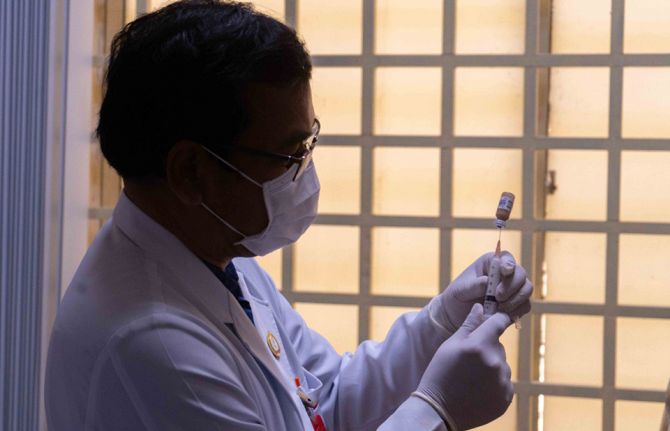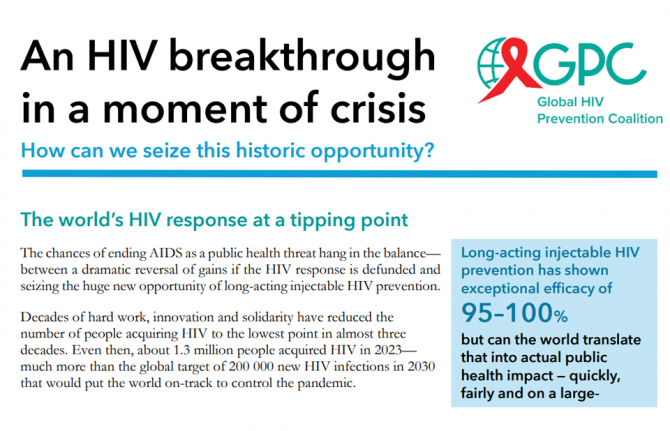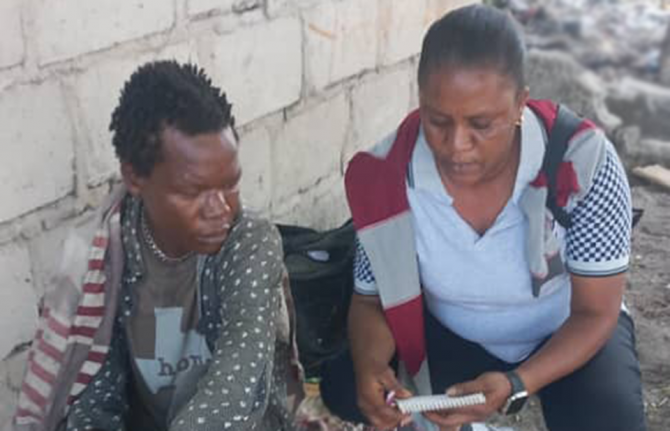
Feature Story
UNAIDS Programme Coordinating Board discusses the need for a renewed focus on combination HIV prevention
06 June 2012
06 June 2012 06 June 2012
The PCB thematic session on combination HIV prevention engaged participants in a series of interactive activities to identify prevention priorities, including the ‘Paper Doll’ female condom campaign, pictured here.
Credit:UNAIDS/C.Rousset
If the vision of zero new HIV infections is to be achieved, a reinvigoration of HIV prevention is urgently needed. This will be most effective if a combination prevention approach is adopted, where multi-faceted and tailored programmes are implemented. An in-depth exploration of how such an approach can be implemented took place during the thematic session of the 30th UNAIDS Programme Coordinating Board (PCB) meeting in Geneva on 6 June.
The PCB heard that, despite its importance, HIV prevention is still not getting enough attention. In 2008, for example, only 20% of AIDS spending was allocated to HIV prevention.
Dr Paul De Lay, UNAIDS Deputy Executive Director, Programmes, told the assembled representatives of governments, UNAIDS Cosponsors, and NGOs, “We have proven strategies for preventing all modes of HIV transmission, but even after 30 years of effort, these effective programmatic and policy strategies still are not being provided to and used by the right populations, in the right ways and on the scale needed to curtail the epidemic.”
“Today’s subject is timelier than when it was proposed a year ago during the 28th PCB due to the recent surge in biomedical research findings,” said Dr De Lay. “But just as the range of new HIV prevention technologies is expanding, so is the need to also focus on the behavioural and structural aspects of the epidemic.”
Encompassing biomedical, behavioural and structural interventions, combination prevention strategies need to be multi-layered, context-dependent, adaptable and harmonized to have maximum impact.
Dr Marie Laga from the Institute of Tropical Medicine (ITM) in Antwerp, Belgium noted that addressing the behavioral and structural components of an epidemic is not simple and that there has been a tendency to focus on the more straightforward biomedical interventions. However, she cautioned that “…the behavioral components of HIV prevention are essential to make biomedical tools work.” She stressed the efficacy of condoms in reducing new HIV infections, an older technology but still important.
The traditional commodity approach, which considered programme elements in isolation, was also said to be too limited. A successful AIDS response must tackle both short and long term impacts, as well as immediate risks and underlying causes of risk. This will entail engaging affected communities and promoting human rights and gender equality while investing in decentralized and community responses.
We have proven strategies for preventing all modes of HIV transmission, but even after 30 years of effort, these effective programmatic and policy strategies still are not being provided to and used by the right populations, in the right ways and on the scale needed to curtail the epidemic
Dr Paul De Lay, UNAIDS Deputy Executive Director, Programmes
Meena Seshu from SANGRAM stressed the structural barriers that sex workers face in India to access HIV prevention services as well as the high stigma and discrimination associated with the disease. Highlighting the key role played by affected communities in preventing HIV infections, Ms Seshu stressed that “sex workers are agents of change, capable of averting the epidemic with the right support. Stop moral criminalization. We are part of the solution.”
All participants emphasized that combination prevention strategies must respond to the local epidemiological and demographic requirements of different groups in a general population. The need to ‘Know your epidemic, know your response’ and know where the next 1000 infections might occur is the fundamental starting point.
“Effective HIV prevention programmes must be based on where and why HIV infections are occurring, what the current response is, and what the additional needs to prevent them are,” said Michael Bartos, Chief, a.i., of UNAIDS’ Science for Action Division. “Prevention responses will fail unless they consider the social and cultural context in which they are intending to make change.”
After the opening, four breakout sessions were organized which concentrated on specific aspects of a coherent combined prevention approach. Topics covered included young people and HIV prevention; the role of civil society and the private sector in HIV prevention; HIV and co-infection among people who inject drugs; and political commitment to HIV prevention.
The session on young people was led and organized by young people themselves and focused on HIV prevention among young people at higher risk. Issues discussed included the existing barriers to access HIV services, the need for enabling legal environments and how to increase youth participation in leading the AIDS response.
Another session paid special attention to the relationship between HIV and the viral hepatitis B and C co-infections, particularly in relation to injecting drug use. This was seen as a major public health concern in several countries in Eastern Europe and Central Asia, recognizing that co-infections cause further complications that accelerate hepatitis progression and make HIV treatment more difficult.



